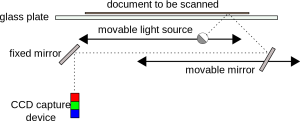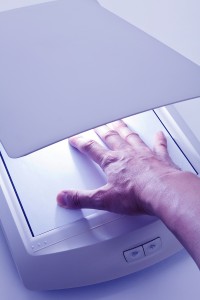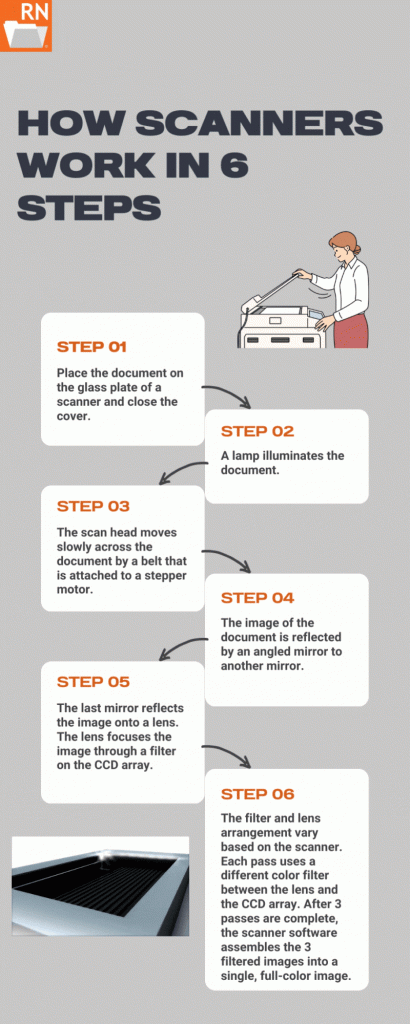 There are a few different types of scanners to choose from when you are thinking of purchasing one, but how does a scanner work?
There are a few different types of scanners to choose from when you are thinking of purchasing one, but how does a scanner work?
How the scanner works and what you need to be scanned will depend on what kind of scanner you need. Below, we’ve outlined the types of document scanners and the general process of how they work.
Types of Document Scanners
Flatbed Scanner
 A scanner that provides a flat, glass surface to hold pages of paper, large format documents, books, photos, and other objects for scanning.
A scanner that provides a flat, glass surface to hold pages of paper, large format documents, books, photos, and other objects for scanning.
The scan head moves under the glass across the page. Sheet feeders are usually optionally available that allow, multiple sheets to be fed automatically.
Handheld Scanners
A scanner that relies on the user’s hand to move the image. Handheld scanners are small and less expensive than their desktop countertops. Trays are available that keep the scanner moving in a straight line. These a most useful if you need to quickly scan text.
Drum Scanners
A type of scanner used to capture the highest resolution from an image. Photographs and transparencies are taped, clamped, or fitted into a clear cylinder (drum) that is spun at speeds exceeding 1,000 RPM during the scanning operation. A light source that focuses on one pixel is beamed onto the drum and moves down the drum a line at a time.
Sheet-Fed Scanners
This scanner only scans paper rather than books or other thick objects. It moves the paper across a stationary scan head.
So, How Does A Scanner Work?
Here are the steps that occur in a flatbed scanner. The process may differentiate slightly from these steps if you use one of the varying scanners listed above. However, this gives a good idea of how scanners work.
- Place the document on the glass plate of a scanner and close the cover. The cover provides a uniform background that the scanner software can use as a reference point for determining the size of the document.
- A lamp illuminates the document.
- The entire mechanism (mirrors, lens, filter, and CCD array) makes up the scan head. The scan head moves slowly across the document by a belt that is attached to a stepper motor. The scan head attaches to a stabilizer bar to ensure that there is no wobble or deviation in the pass (the scan head has completed a single complete scan of the document).
- The image of the document is reflected by an angled mirror to another mirror. In some scanners, there are only two mirrors while others use a three-mirror approach. Each mirror slightly curves to focus the image it reflects onto a smaller surface.
- The last mirror reflects the image onto a lens. The lens focuses the image through a filter on the CCD array.
- The filter and lens arrangement vary based on the scanner. Some scanners use a three-pass scanning method. Each pass uses a different color filter (red, green, or blue) between the lens and the CCD array. After the three passes are complete, the scanner software assembles the three filtered images into a single full-color image.
Do You Need Help Scanning? Record Nations Can Do It For You!
If you have documents that you would like scanned but aren’t ready to invest in a scanner just yet, we can help. Record Nations has a network of scanning experts who use the most reliable, state-of-the-art techniques to scan your data and get your business working paperless as quickly as possible.
To get started, fill out the form, use the live chat, or give us a call at (866) 385-3706. Within minutes of receiving your request, you will have free quotes from experts in your area who can help you with your project.













